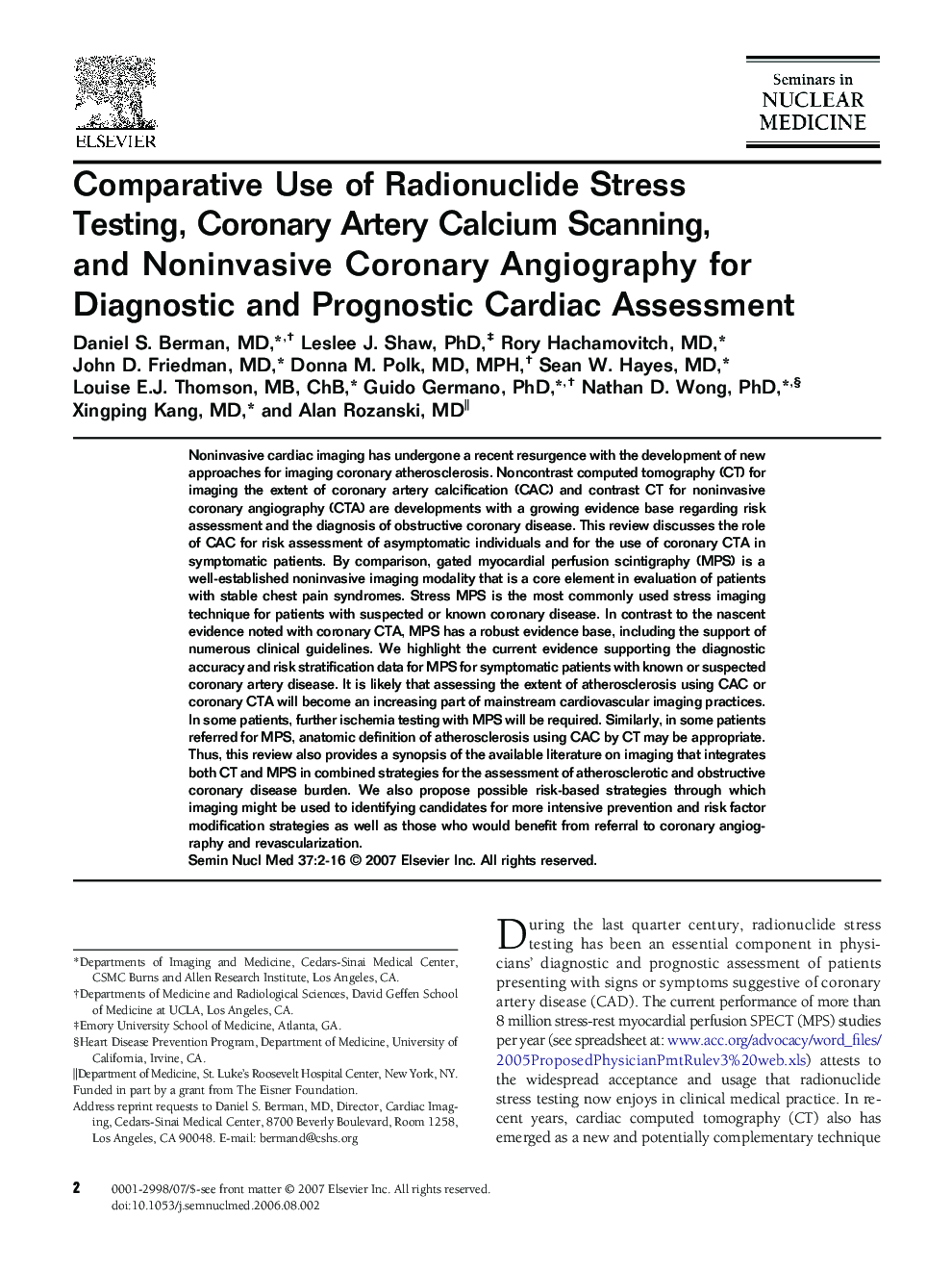| Article ID | Journal | Published Year | Pages | File Type |
|---|---|---|---|---|
| 4251332 | Seminars in Nuclear Medicine | 2007 | 15 Pages |
Noninvasive cardiac imaging has undergone a recent resurgence with the development of new approaches for imaging coronary atherosclerosis. Noncontrast computed tomography (CT) for imaging the extent of coronary artery calcification (CAC) and contrast CT for noninvasive coronary angiography (CTA) are developments with a growing evidence base regarding risk assessment and the diagnosis of obstructive coronary disease. This review discusses the role of CAC for risk assessment of asymptomatic individuals and for the use of coronary CTA in symptomatic patients. By comparison, gated myocardial perfusion scintigraphy (MPS) is a well-established noninvasive imaging modality that is a core element in evaluation of patients with stable chest pain syndromes. Stress MPS is the most commonly used stress imaging technique for patients with suspected or known coronary disease. In contrast to the nascent evidence noted with coronary CTA, MPS has a robust evidence base, including the support of numerous clinical guidelines. We highlight the current evidence supporting the diagnostic accuracy and risk stratification data for MPS for symptomatic patients with known or suspected coronary artery disease. It is likely that assessing the extent of atherosclerosis using CAC or coronary CTA will become an increasing part of mainstream cardiovascular imaging practices. In some patients, further ischemia testing with MPS will be required. Similarly, in some patients referred for MPS, anatomic definition of atherosclerosis using CAC by CT may be appropriate. Thus, this review also provides a synopsis of the available literature on imaging that integrates both CT and MPS in combined strategies for the assessment of atherosclerotic and obstructive coronary disease burden. We also propose possible risk-based strategies through which imaging might be used to identifying candidates for more intensive prevention and risk factor modification strategies as well as those who would benefit from referral to coronary angiography and revascularization.
